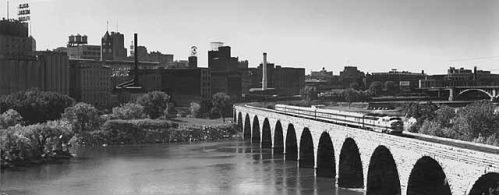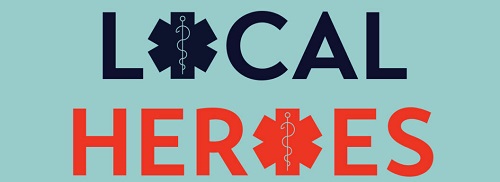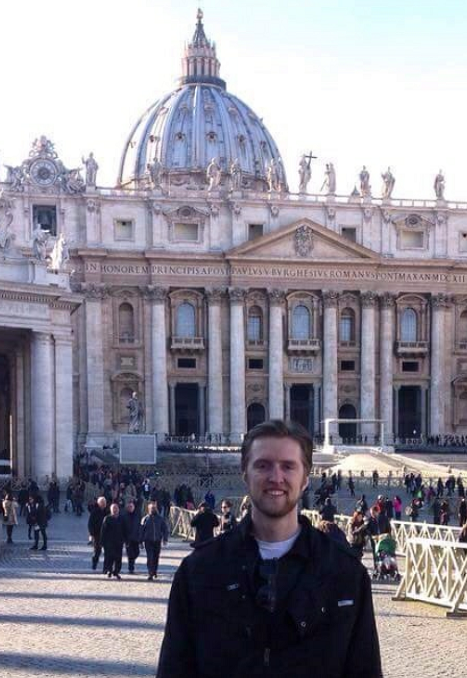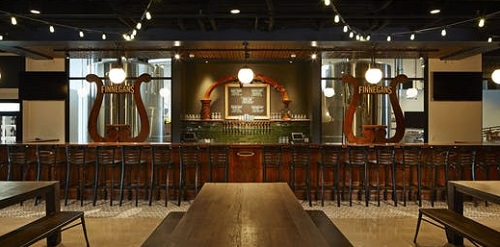Local Leader: Lee Pao Xiong, Director for Hmong Studies, Concordia St. Paul
 Wednesday, May 5, 2021 at 9:03AM |
Wednesday, May 5, 2021 at 9:03AM |  Becky Fillinger |
Becky Fillinger |  Lee Pao Xiong
Lee Pao Xiong
Article by Becky Fillinger
May 14 is Hmong American Day and May is Asian American and Pacific Islander Heritage Month. We talked to Lee Pao Xiong, Director of the Center for Hmong Studies and Instructor of Asian Studies at Concordia St. Paul, about ways to celebrate the holiday, Hmong studies at Concordia and the surge of hate crimes against Asian Americans.
Q: How will you celebrate Hmong American Day?
A: Several events are been planned by several organizations, ranging from festive to somber:
The Hmong American Day Planning Committee will be hosting an event on May 15th at the Hmong Village Shopping Center at 1001 Johnson Parkway in St. Paul. It will feature Hmoob games, many food trucks including the Egg Roll Queen and an English subtitled screening of Paj Nyiag Txoj Hmoo.
The Minnesota Humanities Center will host a virtual education event for educators on the 15th of May 2021 – From the Mountains to the Lakes.
The Hmong Special Guerrilla Units will host a memorial event at the Hmong Memorial Statue at the Minnesota State Capitol ground to remember the 35,000 Hmong veterans who died during the Secret War of Laos serving as surrogate soldiers of the American Armed Forces.
 Minnesota Memorial To Special Forces in Laos
Minnesota Memorial To Special Forces in Laos
Q: In 2000, President Clinton appointed you to the President's Advisory Commission on Asian-Americans and Pacific Islanders. You were the first Hmong presidential appointee in the nation. Please tell us about how it felt to be nominated and what your duties and accomplishments were on the Commission.
A: It was a great honor to have been the first Hmong-American presidential appointee in the nation. Our tasks, among others, were to advise the President and federal agencies on how to improve the quality of life of Asian Americans and Pacific Islanders through increased participation in federal programs where they may be underserved (e.g., health, human services, education, housing, labor, transportation and economic and community development). Furthermore, the Executive Order also called on all federal departments to mobilize their resources to address the unmet needs of Asian Americans and Pacific Islanders.
Our team came up with a report, after hosting town hall meetings cross the United States, that made several recommendations that asked federal agencies to improve their data collection measures, ensure linguistic access in AAPI languages, protect civil rights and equal opportunity for AAPIs, strengthen community capacity, and recognize Native Hawaiians and Pacific Islanders in federal programs and services.
Since the SE Asian community was new to the United States, my emphasis on the commission was strengthen as well as increase our communities’ capacities to access programs and services as provided by the federal government. These included grant opportunities.
 Lee Pao Xiong (middle row, third from left) with students
Lee Pao Xiong (middle row, third from left) with students
Q: There's a Hmong Studies program at Concordia St. Paul - you're a founding director. How have the graduates of the program applied the coursework in their careers?
The Center for Hmong Studies, the first and only one in the world, among its many offerings, was the first higher educational institution in the United States to offer a Minor in Hmong Studies. The purpose of the Minor was to enhance students’ knowledge about Hmong history, culture, and language as they pursued their major programs. As such, most of my students come from the major field of health science, education, business and marketing, psychology, law enforcement, and social work. Other students took my classes for personal development. Here’s a sampling of comments from some of my students from last semester:
“This class helped me understand how much the Hmong people went through. I can now look at my parents and thank them for having me in America because I want to be able to help my parents since they are the ones that helped me. My parents struggled so much and now I really want to repay them and help them as much as I can.”
“It helped me to understand more about Hmong history and where we came from.”
“Classes like this would help me in better understanding my historical background so that I can help others who are suffering through past experiences. It helps me understand in a more clear view of what they might have gone through or what might be affecting them in the long run.”
“It just helps to better know the background and be educated on different cultures. You will probably encounter/work with Hmong people so it helps to know more about them.”
“I have a better understanding of the history of the Hmong people. I feel more empathetic and understanding of when the Hmong got separated during the first wave. I ‘m also able to talk to my dad about something that is a memory of his.”
“It allowed me to learn about the Hmong into a deeper understanding. It allowed me to learn more about the Secret War in Laos that took so many Hmong people’s lives.”
Some of my students are now therapists, teachers, spoken word artists, police officers and teachers.
In addition to course offerings, we also host an international conference on Hmong Studies, which drew Hmong scholars from throughout the world. All of our conferences are organized by students, which gives them marketing, project management, volunteer management and fundraising experiences - all skills needed in the world of work.
We currently occupy the President’s House. We have a large collection of artifacts, documents, and photos relating to the Hmong experiences. As such, we have ongoing museum quality exhibits at the Center. These exhibits have attracted over 20,000 student groups, scholars, and community members throughout the year. We provide expert advice to film makers, journalists, policy makers and others who want to better understand the rich legacy and complex heritage of the Hmong people.
Q: Growing numbers of hate crimes against the Hmong in Minnesota is part of a larger story of crime against Asian Americans. A bill which would expand what could be reported as bias crimes has some movement in the Minnesota legislature. What are your thoughts on the rise in crime against Asian Americans and Minnesota legislation that might help?
A: I think we have to look at your question in the larger context. Asian Americans have always been targeted individually or through policy work. Here are some historical examples:
1854 – People vs. Hall - barred minorities from testifying against whites in criminal cases.
1875 – The Page Act - barred Asian women from coming to the US.
1882 – Chinese Exclusion Act - barred Chinese from coming to the US.
1942 – Japanese Internment - Japanese Americans were rounded up and put in internment camps.
1982 – The murder of Vincent Chin in Michigan.
2006 – The murder of Mr. Cha Vang in Wisconsin by James Nichols.
2014 – The brutal attack of Mr. Sao Lue Vang in Wisconsin by Kevin Elberg.
2021 – The brutal murder of Ms. Es Lee in Milwaukee.
In late 1979 and the early 1980s, when the Hmong started arriving in Minnesota, many of us were also physically and verbally attacked (youth, as well as elders). It is still happening today. Recently, I was a called a “fucking Chink” by a white man driving an SUV in my neighborhood.
I think it’s important to recognize that many of these policies and attacks were and are directed at us because of our race. As such, it’s important for legislators to recognize these hateful acts and to see these attacks as race-motivated crime.
 Hmong tapestry Hunted by Communists
Hmong tapestry Hunted by Communists
Q: Minnesota has the largest urban concentration of Hmong people in the country - about 81,000 people of Hmong ancestry and about 14,000 Lao Americans live here. What would you like other Minnesotans to know about our Hmong neighbors?
A: I think it’s important for the community to know that, we are Hmong. We are not Chinese. We came here as political refugees, escaping the communists. During the Vietnam War, we served as surrogate soldiers of the American Armed Forces in Laos, defending American’s interests in SE Asia by rescuing American downed pilots, guarding American radar installations, and engaging the North Vietnamese Army in combat. In fact, according to former CIA Director William Colby, by fighting the Army of North Vietnam in Laos, we saved over 50,000 lives in Vietnam. The communist hated us because we were American allies. They came after us after the United States pulled out of SE Asia in 1975. We had no choice but to leave our homeland. We continue to be loyal to America by allowing our children to serve in the U.S. military in Iraq, Afghanistan, and other area of conflicts; protecting peace, freedom and democracy.

Q: How many we follow your news?
A: Please visit the Center for Hmong Studies, email xiong@csp.edu, or call us at 651-641-8870.

















































